As I wrote in “Little Black Shit”, I don’t tie flies. I need it said up here again for the end of this to make sense.
I was back in California and heading north from San Francisco to fish Hat Creek and/or the Fall River as I wanted to do some dry fly fishing. On the way, I reached out to my friend, Max Fink, and told him of my plans. He paused for a moment then said, “Dude, don’t be an idiot. Go to the Pit. And get a wading staff if you don’t have one.”
I pulled over and looked at a map. I guess “idiot” got to me. “Dude” as well.
In the next town, I stopped at a hardware store and bought a broomstick and some paracord. The clerk kindly drilled a hole in the end, and I threaded the cord through and tied a 30” length and a loop for my hand. A ten-dollar investment. It saved my life.
I first saw the river from a high bluff. If the Upper East Branch Delaware is where anglers go to have their souls crushed, the Pit is where anglers go to have their mettle tested. And their bodies broken.
The Pit River is a wild rush of canyon water that drops quickly between a series of power stations. Undeveloped in every way possible with no real access but for a service road that runs alongside—sometimes close, sometimes not—fishing the Pit is an exercise in the ridiculously treacherous. Imagine the Keystone Cops trying to navigate the Darien Gap. Now get them drunk on cheap gin.
It’s not easy getting into the river. You have to bushwhack your way through thick bramble to the water’s edge and then it’s just river as there are no shallows at the banks or easy entry. Look down into the black-tea water and it’s impossible to tell if that first step is shin or chin deep. To add to the physical challenge—I’m not sure why we have to do that in fly fishing—the riverbed is comprised of smooth round rocks and boulders that literally roll against each other as the current pushes them downstream. It’s as if someone made a river for fly fishing but had never actually seen a fly-fishing river before. I’m obstinately tough and what I lack in speed or grace (or common sense), I make up for in grind. I can endure. I can abide. I am Dude. I am also Idiot.
I had a few hours of daylight left so I pushed my way through a thicket to the river. On my third step into the water, the rock underneath shifted, and my left foot slid off to wedge between a boulder and a bigger boulder and I dropped chest deep in the water. My body automatically twisted to relieve the pressure on my ankle and suddenly I was facing downstream with the current hammering me against the rock and locking my foot into place. Having your back to current in a fast-moving river is never a good idea. The water will buckle your knees and you will go down. There’s a reason we teach new anglers to wade across a river upstream at a 45-degree angle with your staff above you. It allows you to lean in and brace your knees against the current. The angle the staff and your legs assume when pointing upstream means that it’s harder for them to be swept out. Facing downstream in moving water is dangerous. Being trapped and facing downstream in fast moving water is potentially fatal.
My right foot was free. I threw it forward onto a rock to keep me above the water and put all my weight on it, but I didn’t have the strength to straighten up and free my other foot as the current kept pushing me down. I was starting to panic when I spied the broomstick swinging off my wrist on the surface of the water. I grabbed it and jammed it onto the rock beside my forward foot to get some leverage. With both hands on the staff—and my rod in my teeth—I managed to apply enough force to raise myself up and back against the current, then torque my trapped leg to extract my foot. I turned upstream, planted the broomstick in a deep hole and I reached down to check the foot and leg for breaks. Everything seemed intact if a little sore. My heart, not so much.
Thoughts of Barton Fink flashed through my mind and the line I would steal from the movie when I saw Max again: “You’re a fuck, Fink”.
I calmed myself and began to assess. I was alone and in the middle of nowhere—vultures would find my body before any help could. I needed to scale my expectations back. I wasn’t going to be able to fish my usual method of covering a lot of water as quickly as possible and crossing the river was definitely out of the question. I looked around and focused on a large upstream rock that broke the surface. Hoping it would provide some decent pocket water and something to brace/rest against, I plotted a path to it. Using the staff to poke every step, it took me a half an hour to pick my way 30’ up the river. I only fell three times, which I considered a success. Didn’t die either. Another success. I’ve fallen in some of the best rivers in the world but none of them wanted to kill me.
My back now against the rock, it was time to fish. Naturally, I brought the wrong flies. As I had expected to fish dries, my box was filled with pretty feathery things from NY and the Pit, like many NorCal rivers, is a nymphing game.
It became pretty clear that I wasn’t going to get a strike by floating a fly when I recalled some advice from an old guide on the Truckee: “Take your dries and drown them. CA trout are lazy shits.”
I pulled the fly in, held it underwater and squeezed the “life” out of it until it was a sodden mess. It worked, sort of, and I highsticked through some pockets and caught fish. The sun was now dropping behind the ridge and the cold was getting to me, so I decided to call it a day while still upright. I limped to my camper van to ice my battered shins, swollen ankle and bleeding knuckles. Too tired to cook, I opened a can of ravioli and ate it cold. I think it was Geirach who said that whisky and coffee taste better in tin cups. Maybe. Cold pasta definitely does not.
After I ate, I took a look at my fly box. The fly I had been using was coming unraveled, so I trimmed off a loose thread. Then a wing. Then the tail. That might work. Using my nippers, I proceeded to trim every dry fly I had. I pulled off anything that stuck out, clipped hackle down, and worked my way down to the dubbing. Some fell apart but most held. They weren’t pretty but they might give me a decent shot. That night, I slept poorly as my ankle started throbbing and I was thinking about the next day. Fly fishing is filled with second chances: that pool that didn’t produce today will do so the next time; that cast you blew will be forgotten by the fish in 20 minutes; a fresh rain will create a “new” river and push the salmon upstream. This wasn’t a second-chance situation. It was revenge. I wanted to kill this river.
Morning coffee revived me, and I went back to the same spot. The ugly flies worked, and every pocket produced tough muscled-up rainbows who spent their lives fighting this river. I would no sooner pull a fish out of a slot and another would take its place. I saw less of the river than I wanted but the old adage of never leaving feeding trout (even if they were a foot below the surface) kept me rooted. I spent most of the morning fighting fish and the current and if I didn’t quite kill the river, I think I put a little hurt on it. We came to terms.
Eventually, the battle of being stuck between a rock and hard water was too great for my body, and a newly found sense of mortality too much for my mind. At midafternoon, I went back to my camp for some food and a break. I ate a couple of bars and decided to elevate my ankle to rest it. I fell asleep in the camp chair, woke up to twilight, hopped over to the van and went back to sleep. In the morning, I drove away to find some tensor bandages, feathery flies, a gentle spring creek, and hot food that didn’t come from a tin.
So, while I don’t tie flies, when the situation calls for it, I have no hesitation in untying. Or undying.

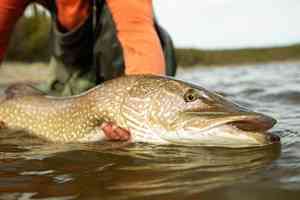
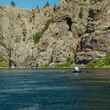
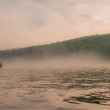

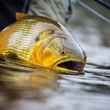
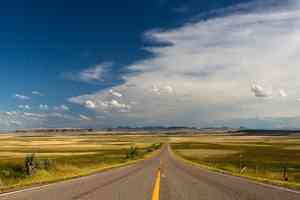


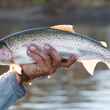
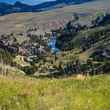
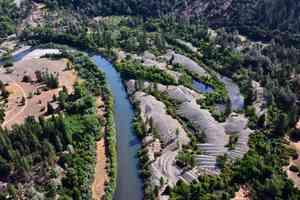
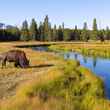
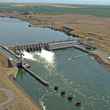

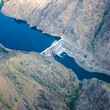
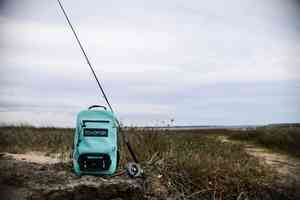

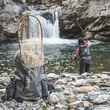
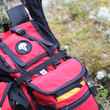
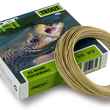
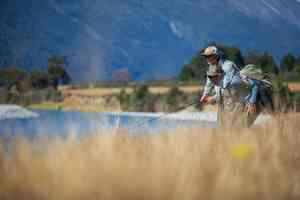
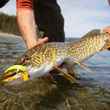

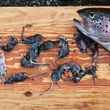
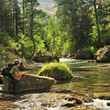
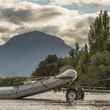
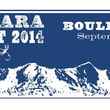

Comments
Ari replied on Permalink
Great read! Both articles. Very relatable lol! Thank you.
DNM replied on Permalink
Thanks, Ari. It was a "fun" trip.
Pages